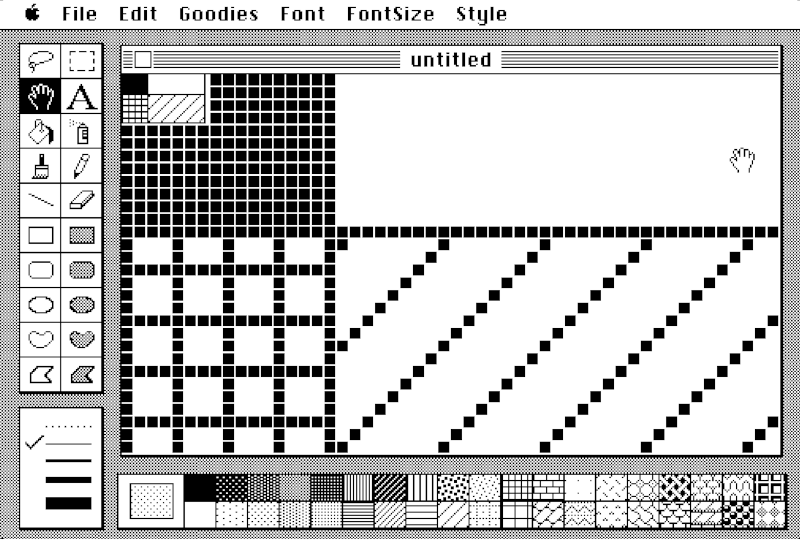Exploring the Legacy of MacPaint: A Closer Look at a 1980s Icon

When we delve into the fascinating world of retrocomputing, we often find ourselves drawn to the allure of vintage hardware, relishing the tactile experience of using machines from a bygone era. However, the team at [Z→Z] is taking a unique approach by exploring the intricacies of MacPaint, the iconic drawing program developed for the Apple Macintosh in the 1980s. This software, though it may appear rudimentary by today’s standards, was revolutionary during its time and set the stage for many graphic applications that followed.
At its release, MacPaint was nothing short of a sensation. The ability to manipulate images on a computer screen was a groundbreaking concept. One of the features that garnered significant applause during its early demonstrations was the innovative erase function, which allowed users to remove portions of their artwork with ease. Such functionality, commonplace in modern graphic design software, was a remarkable advancement back then, showcasing the potential of personal computing.
The testing process employed by [Z→Z] is particularly intriguing. They utilized a software “monkey” — a term that refers to an automated testing tool — that randomly pressed keys, navigated menus, and moved elements around the screen. This method allowed for an unfiltered analysis of the program’s responsiveness and stability. In addition to this exploration, the teardown also delves deep into the underlying Pascal and assembly code, revealing fascinating algorithms that describe how the application fills areas with color, a task that can seem simple yet requires significant computational finesse.
Throughout the analysis, MacPaint has been described as “beautifully organized.” However, [Z→Z] critically examines this assertion, pondering whether the acclaim surrounding its design has been overstated over the years. Regardless of such debates, the program undeniably worked effectively and has left a lasting impact on the development of graphic design software. Many of the principles and techniques introduced in MacPaint can be traced in the functionality of later graphics programs.
The team at [Z→Z] expresses a genuine passion for digging through the source code of old software, including classic games. They encourage others who perform similar explorations to share their findings, fostering a community of enthusiasts eager to celebrate and analyze the history of computing.

















